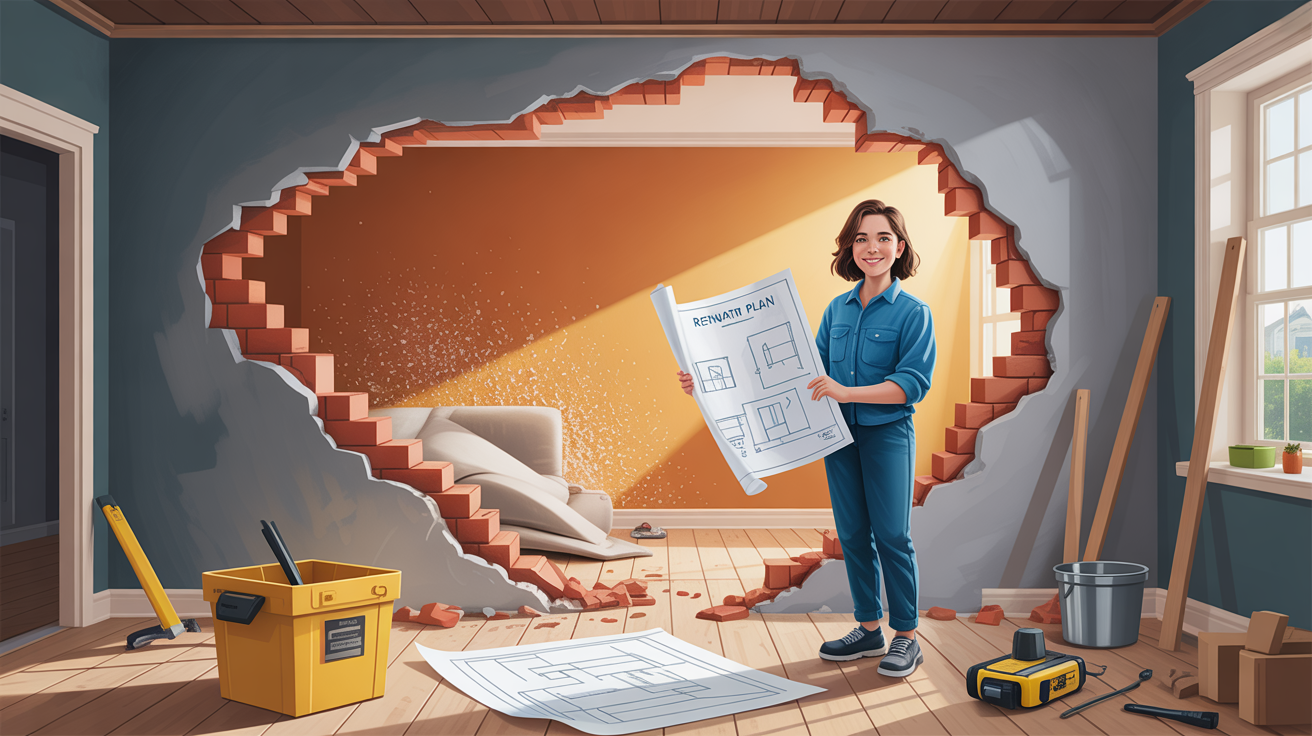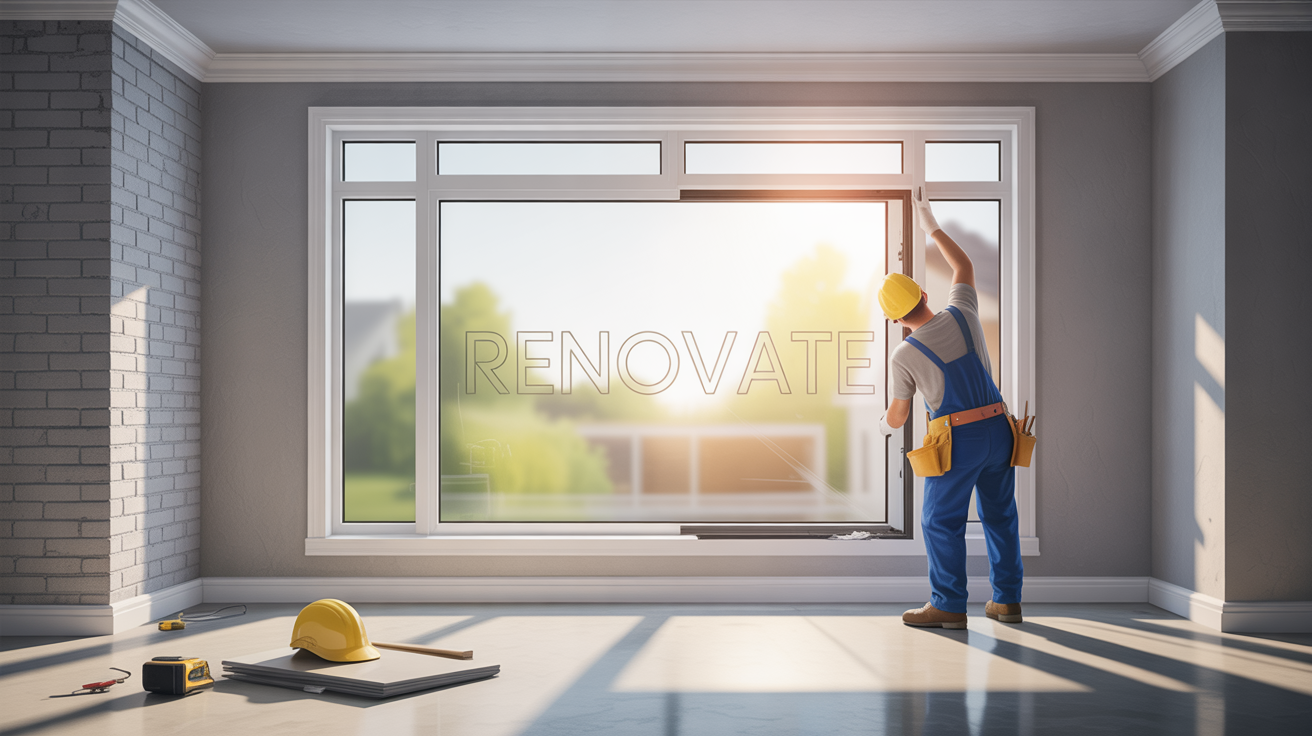A fresh start can be as simple as a fresh coat of paint or as big as knocking down a wall. No matter the scale, a home renovation is your chance to turn daily frustrations into functional beauty. But before the tools come out and the dust settles in, smart preparation makes all the difference.
Are you reimagining a cozy kitchen, expanding your living room, or tackling a full home remodel? Setting clear renovation goals from the beginning will help steer every design decision, budget choice, and timeline discussion that follows.
This guide breaks down the most practical and stress saving steps to get your home ready. Whether you’re new to remodeling or just need a structured approach, you’ll find helpful tips to plan with confidence.
Ready to prep your space like a pro? The renovation magic starts before the first hammer swings.
5 Tips on How to Prepare for a Home Renovation
1. Declutter and Clear the Space
Before you swing a hammer or lay down a blueprint, clear space like you mean it, think of it as setting the stage—no performance starts with clutter in the way. Whether you’re remodeling a single room or taking on the whole house, starting with a clean slate is the smartest move you’ll make.
One of the first steps in preparing for a renovation is clearing out large, unnecessary items. If you’re replacing furniture or upgrading your bedroom, disposing used mattress ahead of time will not only free up space but also prevent damage or dust accumulation during the remodel. Oversized furniture and forgotten clutter can block pathways and delay work, not to mention collect layers of dust once the demolition begins.
Sort with purpose. That old chair collecting dust? Let it go. Move essential items into temporary storage and use clear bins or labeled boxes to stay organized. A quick rule of thumb: if it can be replaced for under $20 and hasn’t been used in over a year, it’s probably safe to part with.
2. Protect Furniture and Valuables from Dust and Damage
Once renovation prep kicks off, your home turns into a work zone filled with dust, tools, and unexpected messes. In that environment, your furniture and valuables are at risk of getting scratched, stained, or coated in debris. Taking the time to shield them now can save you a major headache later.
Don’t wait for paint splashes or drywall dust to settle. Cover furniture with plastic sheets or use spare linens for a simple, breathable layer of protection. Delicate items like mirrors, artwork, and vases should be wrapped carefully in bubble wrap or packing paper to prevent chips and cracks.
Stretch wrap is especially helpful for keeping drawers closed and shielding surfaces from moisture or scuffs. If something is valuable or sentimental, the safest choice is to move it out of the renovation area entirely. Whether it’s into another room or a storage unit, keeping it out of harm’s way makes cleanup easier and helps avoid damage.
3. Plan Your Temporary Living Arrangements

Living through a renovation can feel like camping indoors if you don’t have a backup plan. When your kitchen is out of commission or the bathroom is getting gutted, daily routines can quickly become frustrating. That’s why it’s smart to plan your temporary setup before the noise and dust begin.
If your remodel is limited to one part of the house, try shifting essential activities elsewhere. You can turn a guest room into a makeshift kitchen or set up a lounge area away from the work zone. For bigger projects that affect multiple rooms, consider staying with a friend or booking a short-term rental nearby to maintain comfort.
Talk to your contractor early about which areas will be off-limits and when. This helps you organize your schedule around construction and avoid surprises. A little planning upfront makes it easier to maintain normalcy while your home gets its much-needed upgrade.
4. Communicate Clearly with Contractors and Set Expectations
Think of your contractor as a teammate rather than just someone doing a job. When everyone shares the same vision, the renovation flows more smoothly and the outcome is far more satisfying. The key is to lay everything out clearly before the work begins.
Start by sharing your goals, preferences, and non-negotiables. Whether it’s sticking to a specific layout or using certain materials, your contractor should have a detailed understanding of your expectations from day one. Choose professionals who have a solid reputation, strong portfolios, and positive reviews. Don’t hesitate to ask for references or examples of similar work.
Discuss the timeline and project budget upfront. Make sure it’s something both parties are comfortable with and build in time for potential delays. Keep the conversation going through regular check-ins so you can stay informed and resolve small issues before they grow. Strong communication is the backbone of a renovation that finishes on time and within budget.
5. Review and Obtain the Necessary Permits

Jumping into a renovation without checking permit requirements is like starting a road trip without knowing the speed limit. You might get where you’re going, but there’s a good chance you’ll hit a few roadblocks along the way. Before you begin construction prep, make sure all your paperwork is in order.
Projects involving plumbing updates, new electrical systems, or major structural changes often require formal approval from your local authorities. Skipping permits could result in fines, work stoppages, or being forced to redo parts of the project, none of which help your timeline or budget.
To avoid delays, reach out to your local building department early and ask which permits apply to your renovation plan. It’s also smart to work with contractors who already understand the permitting process and can help with filing. By building this step into your schedule from the start, you set your project up for a smooth and legal finish.
Conclusion
When preparing for a home renovation, it’s wise to plan not just the upgrades, but also what happens to your belongings during the transformation. Storage units like the self storage units Calgary offer an ideal solution for safeguarding your furniture, decor, important documents, and sentimental items, keeping them secure and dust-free while work is underway.
By clearing out renovation zones and temporarily storing your possessions off-site, you protect them from accidental damage and make space for contractors to work efficiently. Once your project is complete, a seamless retrieval from storage allows you to thoughtfully reintroduce each piece into your refreshed space, ensuring a smooth, stress-free transition back to everyday life.
A smooth renovation doesn’t start with demolition. It begins with preparation. From clearing out clutter and protecting your space to planning your living setup and getting the right paperwork in place, every step you take before the first tool hits the wall helps keep your renovation on track.
Think of this phase as laying the foundation for the experience ahead. When you plan with intention, you’re not just managing logistics. You’re creating space for ideas to unfold without unexpected setbacks. Your vision deserves that kind of clarity and care.
Prepare smart, stay flexible, and watch your home transform with fewer bumps along the way.

